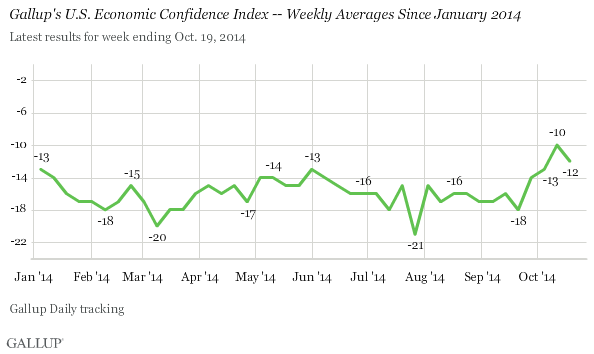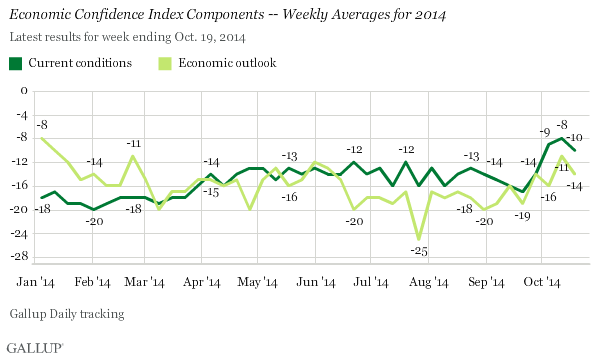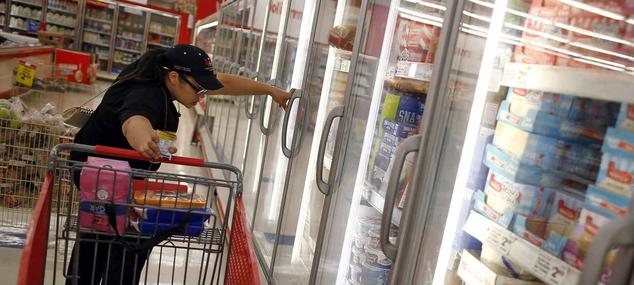WASHINGTON, D.C. -- In the U.S., Gallup's Economic Confidence Index fell slightly to -12 for the week ending Oct. 19. The index had reached -10 the week prior, a new high for 2014.

The Economic Confidence Index has been fairly flat in 2014, staying within a narrow range of -10 a week ago and -21 in late July. This is much narrower than the ranges seen in recent years, in 2013, for example, the index ranged from -3 to -39.
Last week's -12 is the second-highest weekly confidence reading found so far this year. On a more detailed level, Gallup's three-day averages have been particularly volatile over the last week and a half, with a more positive surge early last week, followed by a drop at the end of the week.
Gallup's Economic Confidence Index is the average of two components, Americans' views on the current economy and whether they think the economy will get better or get worse. Both of these components were a bit worse last week than the week before.
Last week, 23% of Americans on average said the economy was "excellent" or "good," while 33% said it was "poor." This resulted in a current conditions score of -10, compared with -8 the week prior. The economic outlook score, however, was three points lower, dropping from -11 to -14, after 40% said the economy was "getting better" and 54% said it was "getting worse."

The economic outlook score seen the week ending Oct. 12 was the most positive since February, while the current conditions score was the best seen since February 2008. Americans' economic outlook is now similar to scores throughout 2014.
Bottom Line
While the emergence of a few Ebola cases in the U.S., and financial problems in Europe and elsewhere may be worrying some investors, Americans remain more confident in the economy than they have been at most other points in 2014. The stock market had a turbulent week last week, but economic confidence fell only slightly. Falling gas prices in many parts of the country could be contributing to the continuation of a more positive outlook. Confidence remains higher than it has been for several years, even with this week's small dip.
Survey Methods
Results for this Gallup poll are based on telephone interviews conducted Oct. 13-19, 2014, on the Gallup U.S. Daily survey, with a random sample of 3,548 adults, aged 18 and older, living in all 50 U.S. states and the District of Columbia.
For results based on the total sample of national adults, the margin of sampling error is ±2 percentage points at the 95% confidence level.
Each sample of national adults includes a minimum quota of 50% cellphone respondents and 50% landline respondents, with additional minimum quotas by time zone within region. Landline and cellular telephone numbers are selected using random-digit-dial methods.
Learn more about how the Gallup U.S. Daily works.

